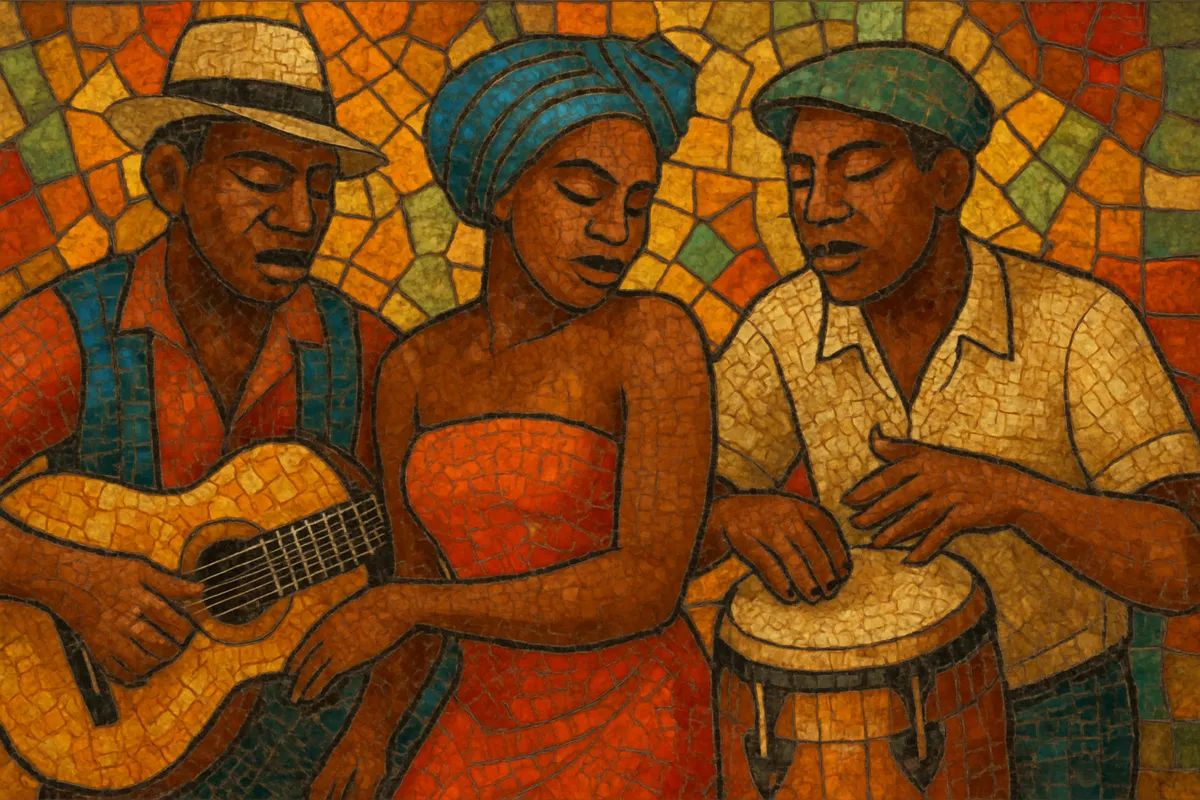Congolese rumba (often called African rumba) is a danceable, guitar-driven popular music that emerged in Kinshasa and Brazzaville after World War II. It blends Afro‑Cuban son and bolero harmonies with Central African rhythmic sensibilities and call‑and‑response vocals.
Typical recordings feature interlocking electric guitars (rhythm, mi‑solo and lead) playing lilting, cyclical figures over a steady, clave‑informed groove, buoyed by congas, maracas, cowbell, bass tumbao, and occasional horns. Songs frequently move from a lyrical, crooning verse into an extended instrumental vamp called the “sebene,” where the band raises the energy for dancers.
Lyrically, Congolese rumba often uses Lingala (and sometimes French), celebrating romance, urban life, and social themes with suave vocal harmonies and a refined sense of melody.
In the late 1940s, musicians in Léopoldville (today Kinshasa) and Brazzaville began adapting Afro‑Cuban records (especially son and bolero) that were arriving via radio and imported shellac. Although called “rumba,” the core harmonic language and bass motion came largely from Cuban son. Early pioneers like Wendo Kolosoy fused this with local rhythms and languages, creating a suave, danceable style.
The 1950s and early 1960s saw the rise of seminal orchestras and guitar innovators. Joseph “Grand Kallé” Kabasele’s African Jazz and the duo of Dr. Nico with Tabu Ley refined sophisticated arrangements and lyrical crooning, while Franco’s TPOK Jazz perfected long, hypnotic sebenes and a distinctive interlocking guitar logic (rhythm–mi‑solo–lead). Horns, claves, and congas reinforced the Afro‑Cuban matrix, but the phrasing and swing became unmistakably Congolese.
During the Zaïre era, larger electric bands, tighter amplification, and extended dance sections pushed rumba toward faster, more percussive strains. This gave rise to soukous, but the rumba ballad‑to‑sebene structure and elegant vocal approach remained central. Artists like Tabu Ley Rochereau, Papa Wemba, and Sam Mangwana modernized harmonies, stagecraft, and international touring.
Congolese rumba spread across Africa, shaping guitar styles from Cameroon to East and Southern Africa. Its guitar sebenes, clave sense, and suave vocals influenced makossa, kwassa kwassa, sungura, benga, and Malagasy styles such as salegy and tsapiky. Today it endures both as a classic dance music and as the foundation for contemporary Congolese popular styles.


